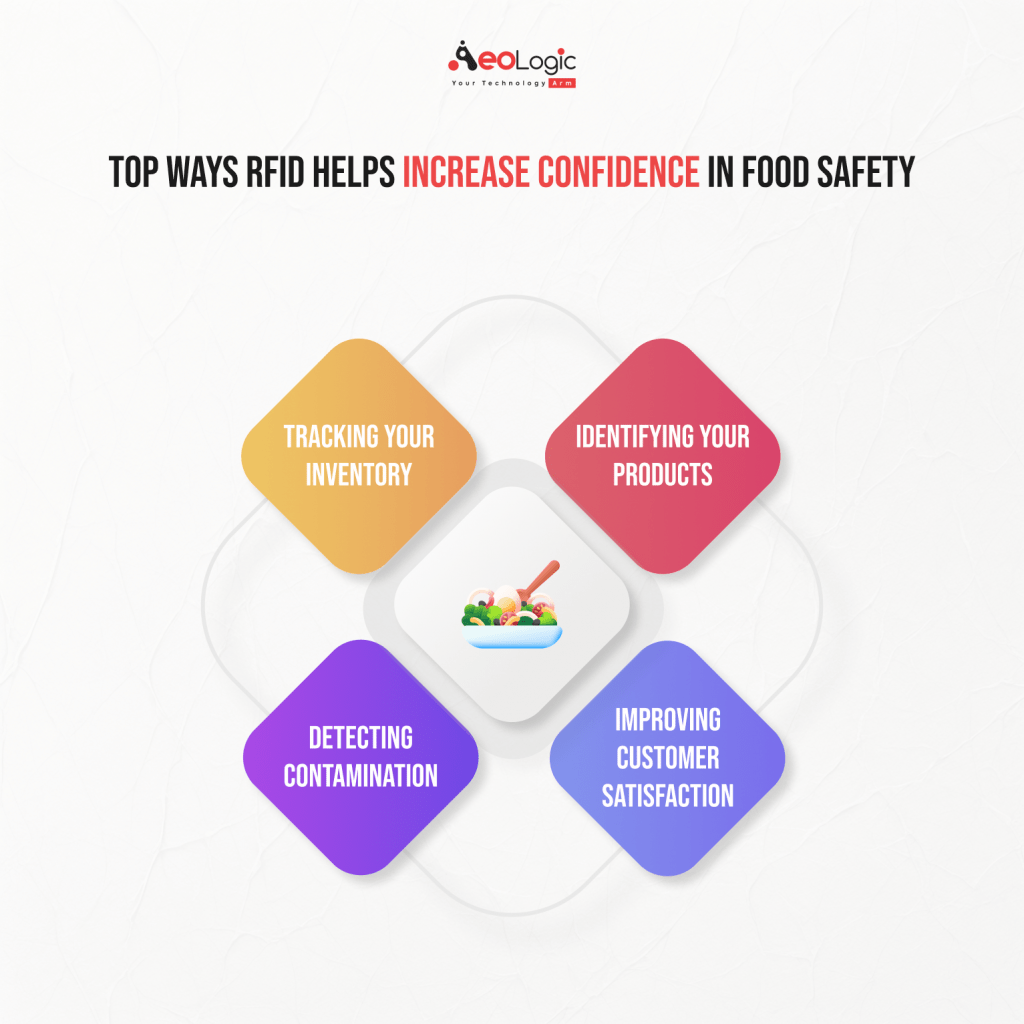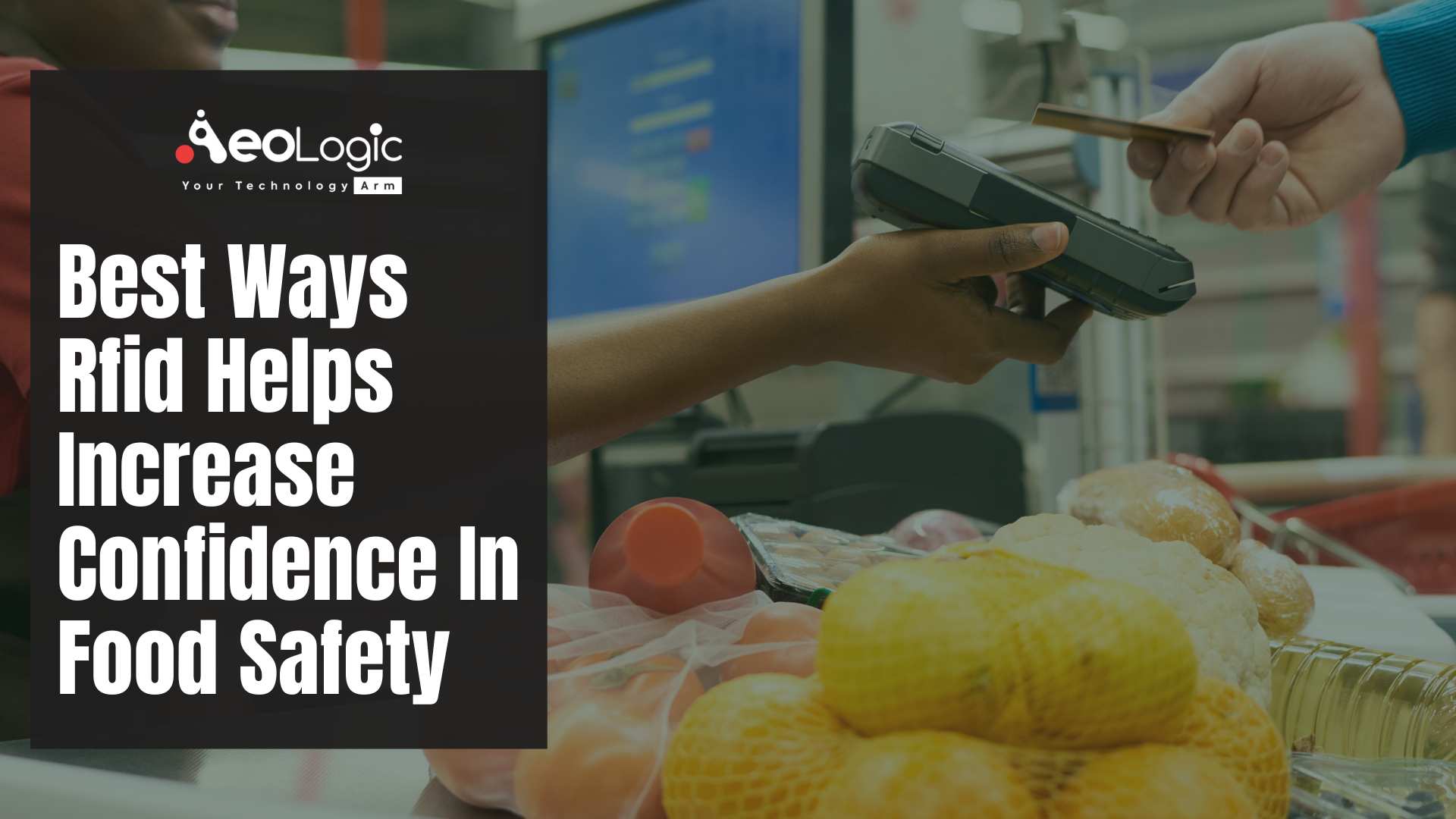The worldwide focus on the food supply chain has changed over the years. In recent years, we have seen an upswing in food-related health events and incidents that heighten public concern about the safety of food. In this article, we’ll explore the best ways RFID helps increase confidence in food safety.
Consumers and retailers are demanding increased food safety standards, but it can be hard to know if the food you buy is fresh or has spoiled. RFID technology, though, provides a way for manufacturers and suppliers to keep track of their products at all times. Check out these ways in which RFID helps consumers feel confident about the foods they eat.
RFID technology is being used in the food industry for a variety of reasons. It is mainly used to improve safety and security in areas such as tracking where products have been, knowing what time they left their cold storage area, as well as determining how long they’ve been on the shelf.
Let’s begin!
Table of contents
- What is RFID?
- Best Ways RFID Helps Increase Confidence in Food Safety
- Top 5 Best Ways RFID Helps Increase Confidence in Food Safety
- Why Use RFID Technology in Food Safety?
- What is the ROI of RFID Technology?
- RFID Technology Improves Food Safety
- Benefits of RFID in the Food Safety
- How can Advantages Help Improve Food Safety?
- Conclusion
What is RFID?
RFID is a type of tracking technology that uses radio waves to identify and track objects. RFID tags are often used to track inventory in warehouses and supply chains, but they can also be used to track food products.
It can be used to track the movement of food products through the supply chain, from farm to table. This information can help ensure that food products are safe and remain within their expiration date. Additionally, RFID tags can be used to track food allergens, which is important for people with food allergies.
Overall, RFID technology can help increase confidence in food safety by providing more information about the movement and handling of food products.
Also see: Our RFID Solutions
Best Ways RFID Helps Increase Confidence in Food Safety

RFID has become an important part of the food industry, with a wide range of uses from tracking food from the farm to your plate.
RFID is a technology that allows for the identification and tracking of objects by using radio waves. It can be read from a distance, without opening the object up or having to touch it. This allows for increased safety and security when handling foods, as well as an increase in confidence in food safety.
It helps ensure that you know exactly what you’re getting, where it came from, how long it’s been on the shelf, and how good it tastes. All while keeping track of your inventory so you know when products are low or out of stock.
Top 5 Best Ways RFID Helps Increase Confidence in Food Safety
Here are some ways RFID helps increase confidence in food safety:
#1. Tracking your inventory: With RFID tags on items like fruit and vegetables, they can be easily tracked as they move through the supply chain. This means less wasted product and greater efficiency in terms of cost management as well as product quality control.
#2. Identifying your products: With RFID technology, you’ll know exactly who produced each item at every stage of production from the packing line to the table. So there’s no more guesswork about whether something is safe to eat or not.
#3. Detecting contamination: The best part is that RFID technology can help you detect contamination long before it reaches your customers! You can use RFID tags to monitor the temperature of products throughout their journey, so if something starts to spoil, you’ll know right away.
#4. Improving customer satisfaction: By using RFID technology, you’ll be able to provide your customers with more accurate information about the products they buy from you. This will not only increase customer satisfaction but also help you avoid costly lawsuits!
#5. Improving your bottom line: RFID technology will also help you avoid costly mistakes and improve your bottom line. By using RFID to monitor the temperature of foods, you’ll reduce the risk of foodborne illness and contamination, which can save money on disposal fees.
Also Read: 10 Ways to Use Artificial Intelligence to Improve Business Processes
Why Use RFID Technology in Food Safety?
There are a number of reasons to use RFID technology in food safety. First, it can help to identify and track food items throughout the supply chain. This traceability can be invaluable in the event of a foodborne illness outbreak, as it can help to quickly identify the source of the contaminated food.
Additionally, RFID technology can also be used to monitor the temperatures of food items throughout the supply chain, ensuring that they remain within a safe temperature range. This is particularly important for perishable items such as meat and dairy products.
Finally, RFID technology can also be used to track expiration dates and other important quality control information for food items. This information can help to ensure that food items are consumed before they reach their expiration date and that they meet other quality standards.
What is the ROI of RFID Technology?
When it comes to the food industry, safety is always the top priority. In recent years, the implementation of RFID technology has helped to increase confidence in food safety. Here’s a look at how RFID technology can help to improve food safety and the ROI of investing in this type of technology.
RFID Technology Improves Food Safety
There are a number of ways that RFID technology can help to improve food safety. One way is by providing real-time tracking of food products. This means that if there is a food recall, businesses can quickly and easily identify which products are affected and take the necessary steps to remove them from circulation. This helps to minimize the impact of a food recall and protect consumers.
Another way that RFID technology can help to improve food safety is by providing accurate and up-to-date information about a product’s shelf life. This information can be used to ensure that products are not sold past their expiration date and that they are consumed before they reach their shelf life. This helps to reduce the risk of food poisoning and other health concerns.
Finally, RFID technology can also help businesses to track and trace the movement of food products throughout the supply chain.
Also Read: The Role of AI in Education And Learning: Just Promises Or Revolution
Benefits of RFID in the Food Safety
RFID is a new technology that allows food manufacturers to track the movement of their products throughout the supply chain. It is a quick, accurate, and reliable way to identify which containers are carrying what product and where it is being stored. This helps ensure that the product continues to meet all quality standards.
RFID offers many benefits for consumers as well as businesses. Here are three key ones:
1. It makes it easier for consumers to know exactly where their food comes from because they can scan an RFID tag on the packaging or at the checkout counter and see information about where the product was grown, processed, or made.
2. The system also helps retailers make sure that they’re not selling out-of-date produce or other foods before they get them back into stores, preventing customers from getting sick or even dying from eating spoiled food.
3. Retailers can use RFID tags in conjunction with bar codes to make it easier for shoppers to find specific items in their stores and thus increase sales by making sure people don’t leave empty-handed when they shop there!
4. Retailers can use RFID tags on clothing to track what has been sold and what is left in stock, making it easier for them to sell out of items quickly and save money by not ordering more than they need.
5. When retailers use the technology to track products from their point of origin through processing and distribution, they can make sure that those products don’t get lost or stolen along the way.
Also Read: 10 Ways to Use Artificial Intelligence to Improve Business Processes
How can Advantages Help Improve Food Safety?
The advantages of using RFID to track food items can help improve confidence in food safety. The technology can provide a paperless way to track information about each food product from farm to table. This information can be used to help identify potential safety hazards and issues with the food supply chain. In addition, RFID can help monitor food items for temperature and other conditions that could affect safety. By using RFID to track food items, companies can have a better way to ensure the safety of their products.
Also Read: Why Is CRM Software a Game-changer When It Comes to Delivering Better Customer Experiences?
Conclusion
By understanding how RFID works and its benefits, you can make an informed decision about whether or not to purchase products that have been verified by this system. Hopefully, this article has given you a better idea of how RFID can help increase confidence in food safety and why it is becoming more prevalent in the food industry. As always, be sure to do your own research before making any decisions about whether or not to purchase RFID-verified products.
If you are interested in elevating your businesses using RFID technologies, connect with our industry experts at Aeologic Technologies.
Related Blogs:
- How AI/ML Can Change the Public Transportation Industry
- Transforming Business With Digital Technology in the Oil Palm Industry in India
- Importance of Digital Asset Management in the Retail Industry
- How AI is Transforming the Agriculture Industry
- 10 Ways to Use Artificial Intelligence to Improve Business Processes
- The Future of IoT Technology in Convenience Stores
- Building Manufacturing Resilience Through AI and ML

I’m Deepika Pandey, an SEO strategist and content writer with 6+ years of experience. I create SEO-friendly content that drives traffic and engages readers. I combine data insights with creativity to help businesses grow their online presence effectively.





